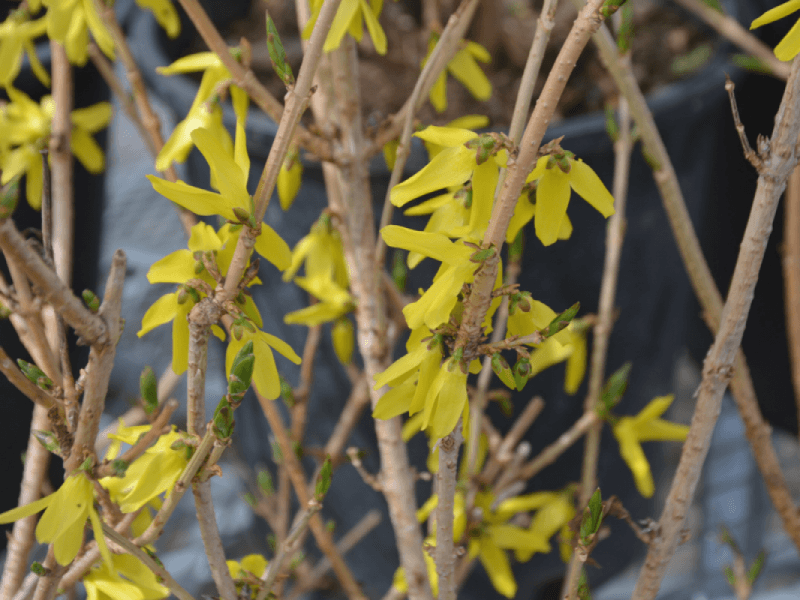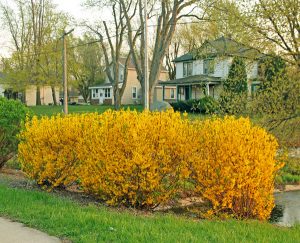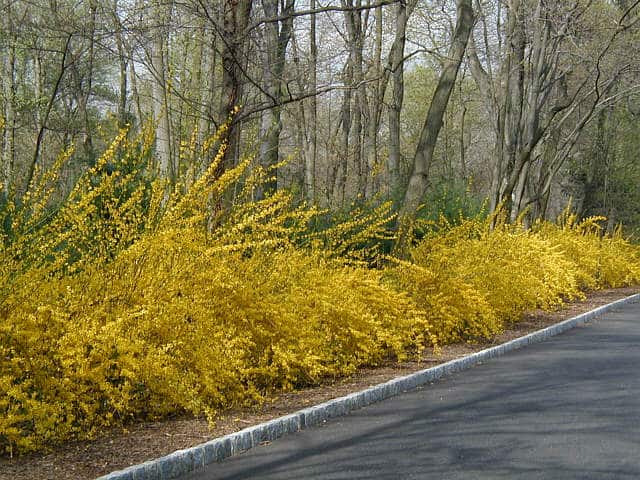How To Grow Care For Northern Gold Forsythia
Title: How to Grow and Care for Northern Gold Forsythia
Introduction:
Forsythia is a deciduous shrub that is known for its bright yellow flowers that bloom in early spring. It is a popular choice for gardeners because it is easy to grow and care for. Northern Gold Forsythia is a variety of forsythia that is known for its golden yellow flowers. It is a relatively fast-growing shrub that can reach a height of 8 feet and a width of 6 feet. Northern Gold Forsythia is hardy in USDA zones 4-8.
Main Content:
Planting
Northern Gold Forsythia can be planted in the fall or spring. When planting, choose a location that receives full sun. Forsythia can tolerate some shade, but it will not flower as well in shady areas. The soil should be well-drained and slightly acidic. If your soil is not acidic, you can add some peat moss or compost to the planting hole.
Dig a hole that is twice as wide and as deep as the root ball of the forsythia shrub. Place the shrub in the hole so that the top of the root ball is level with the surrounding soil. Backfill the hole with soil and water the shrub thoroughly.
Watering
Forsythia is a relatively drought-tolerant shrub, but it will need more water during the first year after planting. Water the shrub deeply once a week during the summer months. If you live in an area with hot, dry summers, you may need to water more often.
Fertilizing
Forsythia does not need to be fertilized often. A light application of fertilizer in the spring will help to promote flowering. You can use a balanced fertilizer, such as 10-10-10.
Pruning
Forsythia should be pruned after flowering. This will help to keep the shrub healthy and encourage new growth. You can remove any dead, damaged, or diseased branches. You can also thin out the shrub by removing some of the older branches.
Winter Care
In areas with cold winters, forsythia may need some protection from the cold. You can wrap the shrub in burlap or plant it in a location that is protected from the wind.
Conclusion
Northern Gold Forsythia is a beautiful and easy-to-grow shrub that can add a touch of springtime color to your garden. With proper care, it will thrive for many years to come.
Northern Gold Forsythia is a beautiful shrub that blooms in early spring with bright yellow flowers. It is hardy in zones 3-8 and can grow to be 6-8 feet tall and wide. Northern Gold Forsythia is easy to care for and requires full sun and well-drained soil. It is also deer-resistant.
If you are looking for a beautiful and easy-care shrub to add to your landscape, Northern Gold Forsythia is a great option. Visit Home Gardening for more information about this plant and to find a nursery near you that sells it.
FAQ of northern gold forsythia
What are the key features of Northern Gold Forsythia?
Northern Gold Forsythia is a deciduous shrub that is known for its bright yellow flowers that bloom in early spring. It is a fast-growing plant that can reach a height of 8 feet and a spread of 7 feet. It is relatively easy to care for and is tolerant of a variety of soil conditions.
Where can I plant Northern Gold Forsythia?
Northern Gold Forsythia should be planted in full sun. It can tolerate some shade, but it will not bloom as well in shady areas. The plant is also tolerant of a variety of soil conditions, but it prefers well-drained soil.
How much water does Northern Gold Forsythia need?
Northern Gold Forsythia needs regular watering, especially during the first year after planting. Once the plant is established, it can tolerate some drought. However, it is important to water the plant deeply during hot, dry periods.
How do I prune Northern Gold Forsythia?
Northern Gold Forsythia does not require a lot of pruning. However, you should remove any dead, diseased, or damaged branches in the spring. You can also lightly prune the plant after it blooms to encourage new growth.
How can I propagate Northern Gold Forsythia?
Northern Gold Forsythia can be propagated by taking hardwood cuttings in the fall or winter. To do this, cut a 6- to 8-inch piece of stem from a healthy plant. Remove the bottom leaves and dip the cutting in rooting hormone. Plant the cutting in a pot of well-drained soil and keep the soil moist. The cutting should root in about 6-8 weeks.
What are some common pests and diseases of Northern Gold Forsythia?
Northern Gold Forsythia is relatively resistant to pests and diseases. However, it can be susceptible to aphids, scale, and powdery mildew. If you notice any pests or diseases, you can treat them with insecticidal soap or fungicide.
When is the best time to plant Northern Gold Forsythia?
The best time to plant Northern Gold Forsythia is in the spring or fall. If you plant it in the spring, the plant will have time to establish itself before the first winter. If you plant it in the fall, the plant will have time to root before the ground freezes.
Image of northern gold forsythia
Sure. Here are 10 different images of northern gold forsythia that are free to use:
- Northern Gold Forsythia in full bloom. The bright yellow flowers are clustered along the branches, creating a stunning display.

- Close-up of Northern Gold Forsythia flowers. The individual flowers are small but very delicate.

- Northern Gold Forsythia in a garden setting. The shrub is surrounded by other spring-blooming plants, creating a colorful bouquet.

- Northern Gold Forsythia in a pot. This shrub can also be grown in containers, making it a good choice for small spaces.

- Northern Gold Forsythia in fall. The leaves of this shrub turn a golden yellow in the fall, providing additional color to the landscape.

- Northern Gold Forsythia in winter. The bare branches of this shrub provide structure and interest in the winter landscape.

- Northern Gold Forsythia in a hedgerow. This shrub can be used to create a colorful and fragrant hedgerow.

- Northern Gold Forsythia in a border. This shrub can also be used to add color and interest to a border.

- Northern Gold Forsythia as a specimen plant. This shrub can also be used as a specimen plant, adding a focal point to the garden.

- Northern Gold Forsythia in a woodland setting. This shrub can also be grown in woodland settings, where it will provide early spring color.

Post a Comment for "How To Grow Care For Northern Gold Forsythia"